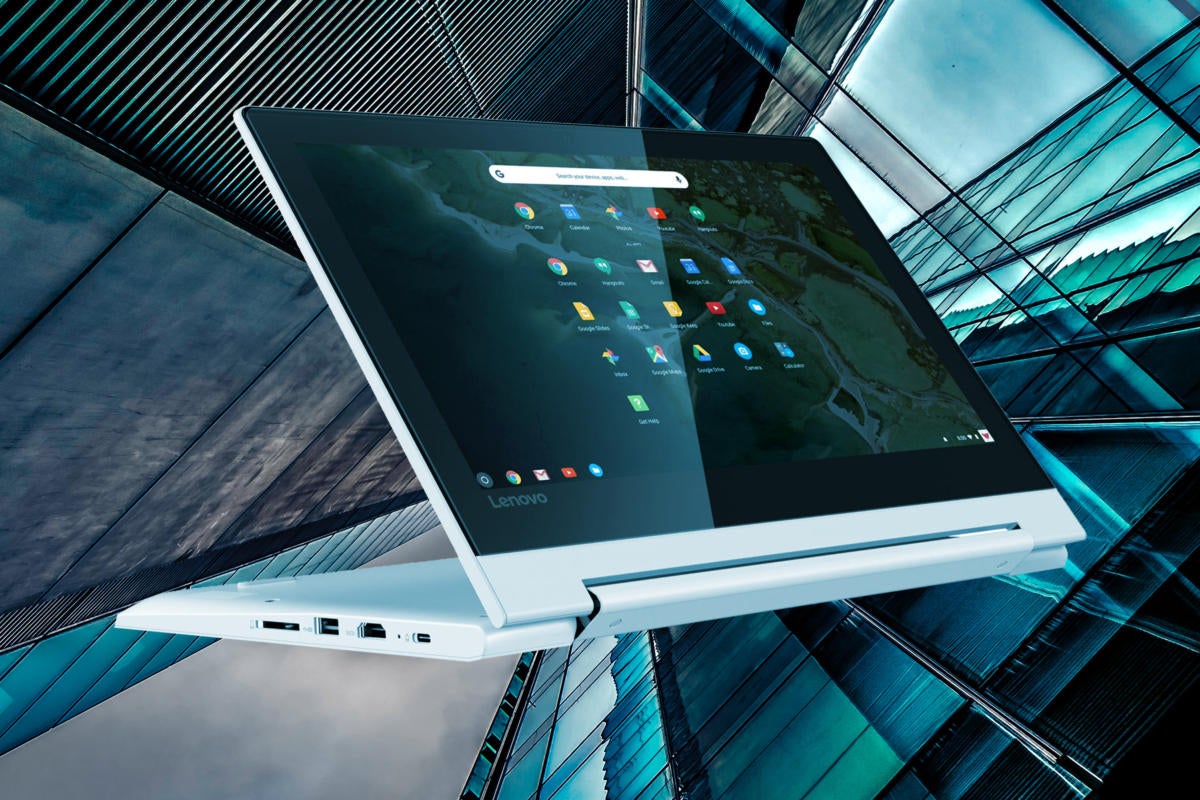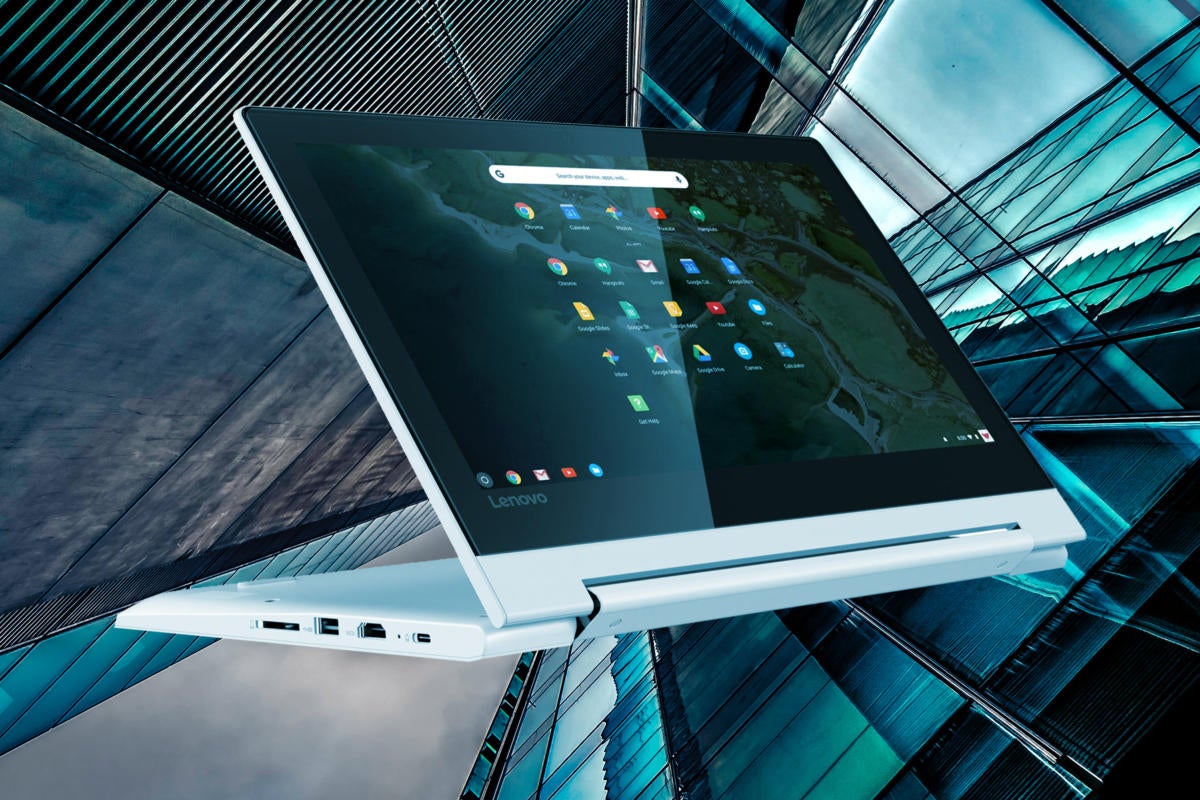
I’ve been a big believer in Chromebooks since day one when the first commercial Chromebook, the Samsung Series 5, rolled out in 2011. Then, some people thought it was a toy. Today, one in four laptops sold are Chromebooks. That number will only continue to go up.
Why? Simple. In the beginning, Linux-based Chromebooks Chrome OS’s interface was simply the Chrome web browser. Some argued then that wasn’t enough for a serious work machine. They were wrong.
Seriously, when was the last time you did any serious work with macOS or Windows without an internet connection? Anytime this decade? The 2010s? Sure, if you’re editing video, gaming, or working with an older vertical program, you still need a powerful PC with a standalone operating system. But, for most of us, our work lives and dies with the internet.
Every corporate program–and I mean every corporate program–has first been moving to a Software-as-a-Service (SaaS) model. More recently, with Chromebooks leading the way, most major technology companies are moving to a Desktop-as-a-Service (DaaS) model, where even your desktop resides much more on the cloud than in your office.
Microsoft isn’t fighting this. They’re all in favor of it. Microsoft has been moving Windows to a DaaS model for years. Recently, with the release of Microsoft 365 and Windows Virtual Desktop (WVD), it’s become obvious Microsoft wants you to be working on its Azure cloud.
But, for all that, conventional desktops aren’t going away. Some programs will always run better on local machines. No matter how fast your internet gets, it’s never going to be as fast as the interconnect between your SSD and your memory, never mind your RAM and your CPU.
That’s one reason why Chromebooks have long supported not just the internet-friendly Chrome OS, but Android, Linux, and now Windows–yes Windows–as well.
Chromebooks: Four operating systems in one
Google is not making this move because Chromebooks can’t compete with Windows. The market has spoken and there’s more than enough room and profit for Chromebooks to thrive. No, Google is doing this because they want Chromebooks to be universal computing devices. Except for Apple’s macOS and iOS, you’ll soon be able to run any of the most popular end-user operating systems on a Chromebook.
ChromeOS itself has also evolved. In the beginning, it was little more than the Chrome web browser running on a thin layer of Linux. Soon, however, it supported its own native Chrome Apps. These use CSS, HTML5, and JavaScript to deliver a traditional desktop-like program experience.
That was comparatively easy. It’s really just an advancement on the abilities inherent in today’s web. The others were more difficult. Here’s how they work.
Android
Although Linux lies underneath both Android and Chrome OS, Android was the first operating system to make the migration to Chromebooks. That’s not too surprising when you consider Google championed both operating systems.
Android apps came over to Google early on. By 2014, Google using App Runtime for Chrome (ARC) enabled ported Android applications to run on ChromeOS. ARC, however, never left beta, Google decided in 2016. Zelidrag Hornung, then Google’s engineering director of Chrome & Android, explained, ARC simply wasn’t good enough.
Google replaced it with a container-based approach. These containers run the Android Framework with the app and all its dependencies. This enabled Android app developers to much more easily move their apps to Chromebooks. While almost all apps available on the Google Play Store can now run on modern Chromebooks, if their interfaces have been highly optimized for smartphone screens they may not look or work their best.
Linux
Linux was always hiding in ChromeOS. It first surfaced so that ordinary mortals could use it in 2014 with the arrival of Chromium OS Universal Chroot Environment (Crouton). With this, you use the Linux Change Root (chroot) command to simultaneously run a Debian or Ubuntu Linux instance, alongside Chrome OS.
This isn’t the same thing as a virtual machine (VM) or a container. In the former, you’re running a full operating system image. This, in turn, is managed by a virtualization hypervisor. Containers, such as Docker, maintain their independence from their host operating system and other containers, and run on top of a limited operating system instance. Crouton runs natively off ChromeOS’s built-in Linux.
When its brother project, Crostini, started it used container technologies to start and run LXC containers. These could then be used to run a single Linux application on ChromeOS.
Since then, however, Google has enabled Crostini to run full Linux distros. It does this by using its own ChromeOS specific VM Termina. By default, it runs Debian Linux, but you can switch Debian out for your Linux distro of choice.
So, in 2019 I could edit images using Linux GIMP and write with LibreOffice Writer on Linux Mint while looking at pictures using Android Pinterest and simultaneously check my Gmail in Chrome OS. That’s none too shabby, but there’s more to come.
Windows
If you really worked at it, you’ve long been able to run Windows programs on Chromebooks. Thanks to programs like Crossover Chrome OS, you’ve been able to run some native Windows programs on high-powered Chromebooks for years. You could also run Windows PC instances using the Chrome Remote Desktop tool.
But, the former left out many Windows programs, while the latter ran into the usual remote desktop broadband and latency trouble. For several years, Google worked on fully supporting Windows 10 on Chromebooks, but those efforts came to nothing.
Now, Parallels, a virtualization and remote access company, is partnering with Google to bring Windows to ChromeOS with its forthcoming Parallels Desktop for Chromebook Enterprise.
As some of you know, Parallels had already enabled Chromebooks to run Windows apps via remote access to Windows desktops. It did this, as well as enabling you to run macOS apps, remote Windows and Mac computers via Parallels Access. Parallels Remote Application Server (Parallels RAS) also lets you run Windows programs by using the Windows terminal server on Amazon Web Services (AWS), Microsoft Azure, or data center, and/or on-premise servers. All of these methods, while useful, run into the usual remote desktop and Desktop-as-a-Service (DaaS) networking slowdown worries.
This new program takes a different approach. Parallels is working with Google to “bring enterprises and cloud workers full-featured Windows applications to Chrome Enterprise this fall.”
Chrome Enterprise is Google’s business service for Chromebooks. With it, for $50 a device per year, your IT crew gets access to Managed Google Play via an approved Enterprise Mobility Manager (EMM). This business Chromebook management program works hand in glove with other system administration programs such as Cisco Meraki; Citrix XenMobile; IBM MaaS360; ManageEngine Mobile Device Manager Plus; or VMware Workspace ONE. EMM also includes Active Directory (AD) integration.
Specifically, Parallels promises to empower enterprises to:
- Seamlessly add full-featured Windows apps, including Microsoft Office, to Chromebook Enterprise devices.
- Enable efficient, productive, and collaborative work anytime from anywhere without an Internet connection.
- Eliminate additional hardware costs and minimize the total cost of ownership (TCO).
How? We don’t know yet, but we have some clues. First, it will be a VM approach. Nick Dobrovolsiky, Parallels Senior Vice President of Engineering and Customer Support, said, “IT admins will be able to easily manage familiar automated corporate Windows image deployments they prepare, provision, and automatically provide to their employees. Those virtual machines are fully capable Windows installations; admins can install applications, manage them remotely, and support users with familiar tools—just like they do with physical Windows PCs.”
Parallels has long made a business for itself by offering Mac users access to Windows VM via its Parallels Desktop for Mac. This program also supports other operating systems such as Fedora and Ubuntu Linux. Since, for now, Macs and Chromebooks, both use x86 processors, using the Parallels proprietary VM on Chromebooks should be a straightforward operation.
Presumably, you’ll be able to manage the VMs, along with the Chromebooks they’ll live on with Chrome Enterprise and your EMM. Parallels has also long provided Windows license management for Macs, so it’s safe to bet it will give Chromebook administrators the power to see, deploy, deactivate and even blacklist licenses based on the Chromebook’s identity.
Of course, this new Windows on a Chromebook won’t work on every system. You’ll need a well-equipped Chromebook with at least 40GBs of internal storage and a newer i3 or higher processor. There’s also no way that you’ll be running Windows 10 on an ARM-based Chromebook.
With high-end Chromebooks, such as the Acer Chromebook 714, Dell Latitude 5300 Chromebook Enterprise, or the Google Pixelbook Go, you’ll have no trouble at all. For that matter, if you max out your RAM to 16GBs, you could run Chrome OS, Android, Linux, and Windows simultaneously. That’s more of a party trick than anything useful, but nevertheless you could do it.
Chromebooks: The universal computer
Why do this? Easy.
First, for developers or system administrators, it’s always been handy to have multiple operating systems at your beck and call.
But, what’s more important, is that by giving Chromebook users the power to run Windows it gets rid of, for once and for all, the biggest reason to stick with a Windows-only PC. In the past, people clung to Windows to run that one application, such as Quicken, QuickBooks, PhotoShop, or a homebrew vertical application, which would only run on Windows. Going forward, you’ll be able to use a Chromebook for all your computing needs.
Between this change, and the continued rise of SaaS and DaaS, computing future will be on the Chromebook and similar comparatively low-powered Windows devices. There will still be a place for conventional PCs for gamers and high-end graphical creators, but for most of us, a Chromebook will be all the computer we need.



